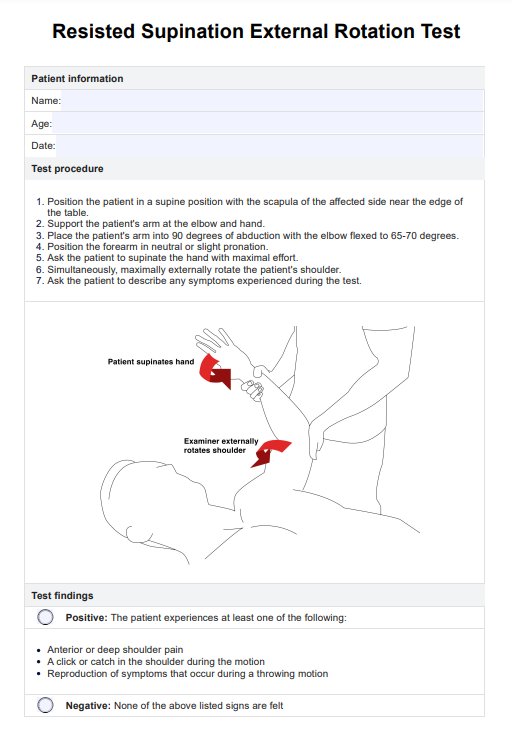The resisted supination external rotation test assesses for SLAP lesions by evaluating pain or discomfort during resisted supination and external rotation of the shoulder.

Resisted Supination External Rotation Test
Learn about the Resisted Supination External Rotation Test, a clinical test for SLAP lesions. Use our template for consistency and diagnostic accuracy
Resisted Supination External Rotation Test Template
Commonly asked questions
This test has poor sensitivity (14.3%) but good specificity (80.8%), making it a useful tool when combined with other diagnostic methods for rotator cuff tears and shoulder injuries.
Resisted supination refers to the action of supination while an opposing force resists the movement. In the context of the Resisted Supination External Rotation Test, it involves turning the palm upward against resistance, similar to turning your palm up to ask for something.
EHR and practice management software
Get started for free
*No credit card required
Free
$0/usd
Unlimited clients
Telehealth
1GB of storage
Client portal text
Automated billing and online payments











